Microlearning Safety Training Videos.

Angle Grinders – Pre-Operational Checks
The use of angle grinders can be extremely dangerous, posing a risk not only to the operator but to others in the work area. This safety short gives you some checks that should be performed before operating an angle grinder.

Chainsaws – Components
An awareness of a chainsaw’s condition is vital in the safe and successful operation of the chainsaw. This program will concentrate mainly on the gasoline powered type of chainsaw but essentially the safety and operational considerations are very much the same for the various types.

Chainsaws – Cutting
There are a variety of timber cutting tasks that can be undertaken using a chainsaw, however the ones that this program will cover are: Limbing, Cross Cutting or Bucking, Ripping, and Felling. There is no doubt that a chainsaw can be a dangerous tool and that there is no substitute for proper training and a professional approach to their use.

Chainsaws – Fueling
A two-stroke engine runs on a mixture of Gasoline and oil. Check your operator’s manual for correct Gas/oil ratios and oil types. It is vital to make the mixture according to the recommended ratio as engine damage may occur with the wrong gasoline mixture. Creating this mixture in a controlled environment helps to minimize the risk of contaminants in the mixture.

Chainsaws – Holding and Operating
When operating a chainsaw, it is vital that all safety measures relating to the operation of the saw be practiced at all times. Do not use a chainsaw that is back–firing, missing parts or not running properly. It is dangerous and is a potential fire hazard. Having a strong understanding of the safe operation basics is key to completing any chainsaw operation successfully and safely.

Chainsaws – Personal Safety
When working with chainsaws, certain safety procedures must be practiced to protect the chainsaw operator and those working in the immediate vicinity from injury. The most common parts of the body which are injured by chainsaw accidents are the hands, knees, feet and head, especially on the left side of the body. However, with the application of proper work practices, the use of modern equipment, and correct protective clothing, chainsaws can be used efficiently and safely.

Chainsaws – Saw Chains
There are a wide range of saw chains to choose from, however the major factors that need to be taken into consideration are the type of work to be undertaken, the type of timber to be cut and the Chain Cutter Profile which is best suited to your purpose.

Chainsaws – Starting the Chainsaw
It is always preferable to start the chainsaw on the ground. However, in some situations, it’s not appropriate or practical. There should be no people or animals in the vicinity of the saw as those without sufficient personal protective equipment, for example, safety glasses or hearing protection, will be exposed to significant potential harm.
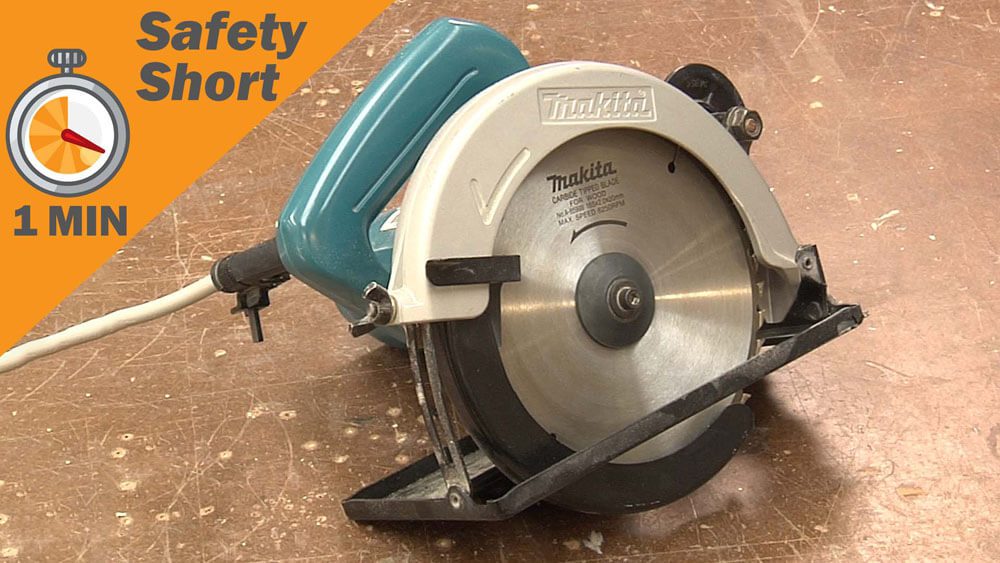
Circular Saw Basics
Circular saws are used extensively for a variety of cutting operations. This safety short gives you a quick overview of how to operate a circular saw.

Compressed Air – General Guidelines
Compressed air is not ‘just air’, it is air travelling in an intense stream at a high velocity. Exposure to it can result in severe injuries or even fatality. This safety short gives you a quick overview of the do’s and don’ts when using compressed air.

Confined Space - Entry Permit Basics
The only safe approach to working in confined spaces is to diligently follow the instructions that are detailed in a Confined Space Work Permit and to utilize any personal protective equipment that has been identified as necessary. This safety short gives you a quick overview of Confined Space Entry Permits.

Confined Spaces - Definition
Every year there are serious accidents involving Confined Spaces. This safety short explains how you can define what a Confined Space is.

Contractor Management – Induction
At the beginning of the job, contractors, along with everyone doing work in the location, should receive a safety induction. This safety short gives you a quick overview of what a safety induction is and what information should be included in it.

Contractor Management - Planning Ahead
Consideration of health and safety issues must begin at the planning stage, before the contractor has started work. This safety short covers some important questions that should be asked when planning work for a contractor and potential hazards a contractor may encounter.

Contractor Management - Task Creep
One of the most important considerations in contract management is the so-called “task creep”. This can occur when, after the contractor’s task is assigned, the job requires more work than was originally agreed. This safety short briefly explains what ”task creep” is and why it’s an important consideration.

Coronavirus – How is it spread?
Coronaviruses are a large group of viruses that can cause illnesses ranging from the common cold to more severe diseases. This safety short examines the various ways in which Coronaviruses can be spread.

Coronavirus Control Measures
As a family, coronaviruses are common across the globe. This safety short outlines some of the control measures that can be taken to prevent their spread.

Cybersecurity Awareness and Threat Identification - Insider Threats
A particularly dangerous form of cybersecurity risk is that of insider threats. These are cyber threats that originate from within the organization which makes them especially difficult to detect and deal with.
Because an insider threat does not need to go through the process of gaining access to the system – as they’re already inside – they are often capable of going undetected for longer, and doing more damage, than external threats.

Cybersecurity Awareness and Threat Identification - Malware
Malware is software created and deployed to compromise or disrupt computer systems. The consequences of a system becoming infected with malware can be devastating, including the breakdown of normal operations, the accessing of sensitive information by criminal actors, disruption to business and financial loss. bAny professional computer system should have malware protection set up, but there are also ways in which an individual can identify the possibility of malware, allowing them to take steps to prevent damage.

Cybersecurity Awareness and Threat Identification - Phishing
Phishing is a type of social engineering – the practice of manipulating people into giving up valuable information. Signs to look out for to avoid phishing scams include: Generic greetings in an email, or a style of writing that doesn’t seem to fit the source. Unexplained invoices or references to unknown purchases. Links to “update payment details.” Misspelled words. Any claims about being entitled to refunds or rewards, that require a link to be clicked to access.

Cybersecurity Awareness and Threat Identification - Ransomware
One specific and very damaging type of malware is ransomware. This is software that infiltrates a system and stops it working, by locking or encrypting files to prevent access to them. The user of the ransomware will then demand a payment to unlock the system.

Electrical Safety – Basic Facts
It’s important to have a basic understanding of how electricity behaves if you intend to work with it. This safety short gives you some facts to consider when working with electricity.

Electrical Safety - Basic Rules
In addition to the potential for injury and death, electrical accidents in the workplace can result in a wide variety of outcomes including damage to equipment, fires and explosions. This safety short outlines the important rules to consider when working with electricity.

Electrical Safety - Do's and Don’ts
Most electrical accidents occur as a result of existing control measures being either ignored or violated. This safety short gives you a quick overview of some do’s and don’ts when working with electricity.
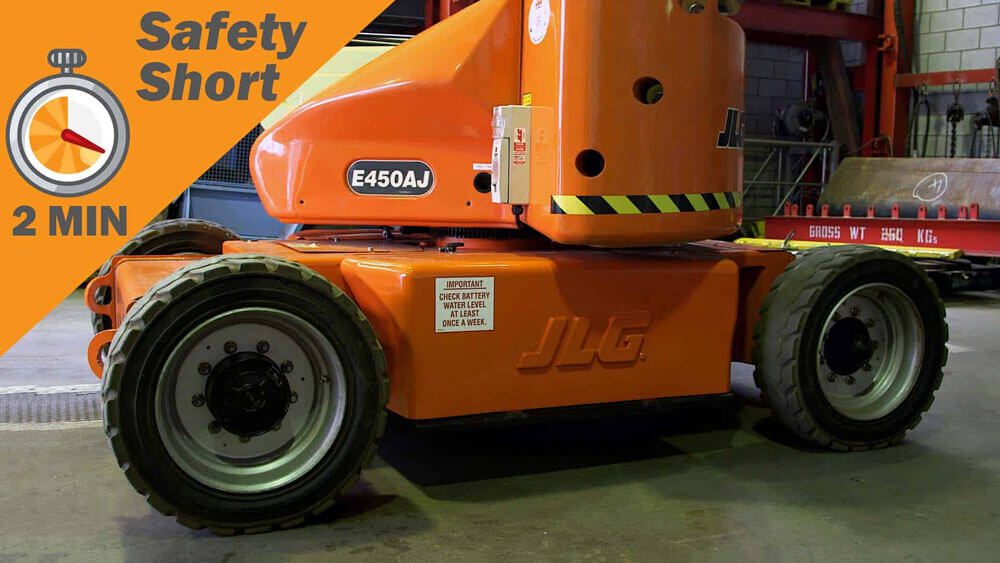
Elevating Work Platforms – General Guidelines
The use of Elevating Work Platforms (EWPs), also referred to as Mobile Elevating Work Platforms (MEWPs) has been a major factor in the reduction of falls and accidents in the workplace. This safety short gives you a quick overview of the general guidelines when operating an EWP.

Elevating Work Platforms - Pre-Operational Checks
The use of Elevating Work Platforms (EWPs), also referred to as Mobile Elevating Work Platforms (MEWPs) has been a major factor in the reduction of falls and accidents in the workplace. This safety short gives you a quick overview of checks that should be performed before operating an EWP.

Face Mask Basics - Coronavirus Control
Face Masks are an effective control measure that can be used to control the spread of Coronaviruses. This safety short gives a quick overview of common mask types and how to use them correctly.

Fatigue – Causes of
Fatigue is an acute and/or chronic state of tiredness that can lead to mental and/or physical exhaustion. Fatigue prevents people from functioning within normal boundaries. This safety short covers some of the potential causes of fatigue.

Fire Blankets - How to use
Fire blankets are an important tool when fighting the spread of a fire. This safety short gives you a quick overview of how to correctly use a fire blanket.

Fire Extinguishers - Basic Operation
Unless you are familiar with how to use different types of fire extinguishers and are able to select the appropriate extinguisher to use you will not be able to safely or confidently extinguish a fire using a portable fire extinguisher. This safety short gives you a quick overview of how to operate a fire extinguisher.

Fire Prevention Measures
Fire can be the source of extreme destruction, serious injuries and many fatalities. This safety short outlines some of the prevention measures that can be taken to avoid fires.

First Aid for Burns
The main problem associated with burns is skin damage and the effect this damage has on the well-being of the victim. This safety short gives you a quick overview of how to treat different kinds of burns.

Forklifts - Pre-Operational Checks
A loaded forklift can weigh many tons and do a lot of damage in the event of an accident. In addition, they are frequently less stable than many other vehicles. This safety short gives you a quick overview of checks that should be performed before operating a forklift.

Gas Cylinders - General Guidelines
Gas cylinders supply a wide variety of gases for a multitude of different industrial, medical and domestic purposes. This safety short gives you some general guidelines to apply when handling gas cylinders.

Gas Cylinders - Pre-use Checks
Gas cylinders supply a wide variety of gases for a multitude of different industrial, medical and domestic purposes. This safety short gives you some checks to perform before using gas cylinders.

GHS Labelling Explained
Every combination of class and category classification under the GHS, requires a unique combination of label elements, including: Pictograms, Signal Words, and Hazard Statements. This safety short gives you a quick overview of these elements.

Hand Washing Basics
Effective hand washing technique is crucial in helping avoid infectious diseases and maintaining good health. This safety short gives you a quick overview of how to thoroughly clean your hands.

Hazardous Atmospeheres
A lack of understanding of how hazardous atmospheres are created can lead to disastrous results. This safety short gives you a summation of the different kinds of hazardous atmospheres.

How to Clean up Blood and Body Fluid Spills
Bloodborne Pathogens can cause serious diseases (such as Hepatitis B, Hepatitis C and HIV) but following procedures that have been laid down will go a long way to protect you from infection. This safety short covers techniques for quickly and safely cleaning up blood and body fluid spills.

How to use an Automated External Defibrillator
A large number of emergencies that require CPR occur as a result of sudden cardiac arrest, which usually leaves the heart fibrillating, or quivering. An Automated External Defibrillator, or AED is designed to deliver an electric shock to the casualty in an attempt to stop heart fibrillation and restore normal heart rhythm. This safety short gives you a quick overview of how to use an AED.

Kitchen Safety and Food Hygiene - Hygiene Solutions Cleanliness
Anyone who handles food must maintain a high level of safe handling practices to control the spread of harmful organisms or allergens. Cleanliness is key. Always ensure your clothes, hands and face are thoroughly clean before beginning a new task. Coughing, sneezing or touching your face and hair prior to handling food can lead to cross contamination. This safety short gives you a quick overview of how to maintain a clean workspace within a food preparation environment.

Kitchen Safety and Food Hygiene - Hygiene Solutions Safe Storage
Raw food must never come into contact with cooked or ready-to-eat food. When being stored, raw food should always be covered and stored lower than cooked foods, to help prevent cross-contamination. Allergenic food should also be stored separately. This safety short gives you a quick overview of how to safely store perishable items within a food preparation environment.

Kitchen Safety and Food Hygiene - Control Measures
Cleaning up spills as soon as they occur is key to minimizing workplace accidents This safety short gives you a quick overview about control measures that can be undertaken to reduce accidents in a food preparation environment.

Kitchen Safety and Food Hygiene - General Safety Hazards
The most common causes of injury when preparing food are slips, trips and falls; incorrect manual handling procedures; burns, and exposure to harmful substances. Other concerns include cutting tasks as well as exposure to heat and noise. This safety short gives you a quick overview of what safety hazards to look out for in a food preparation environment.

Kitchen Safety and Food Hygiene - Hygiene Hazards
Hygiene is a major concern wherever food preparation is being undertaken. If contaminated food is ingested, it can lead to serious illness, allergic reactions and in extreme cases, even death. This safety short gives you a quick overview about the major hygiene hazards to look out for in a food preparation environment.

Kitchen Safety and Food Hygiene - Working with Heat
Sources of extreme heat are often present in food preparation environments which makes attention to safety of the utmost importance. This safety short gives you a quick overview of how to work safely with heat within a food preparation environment.

Lifting Technique Basics
For children, correct lifting and carrying comes naturally. It’s only as we get older and become lazy that we begin to adopt unnatural and potentially injurious lifting and carrying techniques. This safety short gives you a quick guide on how to lift and carry objects correctly.

Major Wounds - How to Treat
Some bleeding incidents are very serious and require urgent action. Serious bleeding that is not stopped quickly is life threatening. This safety short covers techniques for treating someone who has sustained a major wound.

Manual Handling - Important Questions
Manual handling contributes directly to a significant percentage of work-related accidents and injuries. This safety short covers some important questions to consider before manual handling takes place.

Mental Health
Mental health, while an important factor in workplace health, is often overlooked. This safety short covers some concepts and techniques that can promote good mental health in the workplace.

Portable Drill Basics
Power drills are versatile tools which can drill a variety of materials ranging from wood to steel. This safety short gives you a quick overview of how to operate a portable drill.

Step Ladders - General Guidelines
Falls from any height, including when using a step ladder, can result in serious injury, but many falls can be avoided if safety procedures are followed. This safety short gives you some general guidelines for safely using a step ladder.

Stress - Causes of
Some workplace hazards are obvious, but work can also carry risks to mental health which are less apparent. This safety short covers some of the potential causes of Work-related stress.

Trenching and Excavation - Control Measures
There are a variety of control measures that can be put into place to address the hazards of excavation and trenching. There are three ways of controlling the risks of ground collapse: Trench Shields, benching or slopping, and ground support. After an Excavation has been dug, nobody should enter until an appropriate ground support system is in place.

Trenching and Excavation - Hazard Identification
Identifying hazards is the first step before control measures can be implemented. It’s necessary to identify the presence of any essential services at the site of the excavation. This means any underground services such as gas, water, sewerage, or electrical lines. It also means overhead power lines.

Trenching and Excavation - Hazards to Avoid
There are a number of things that should never be done while working on an excavation or trench. By making sure everyone in the workplace is fully aware of all the potential hazards, remains aware throughout the work, and is vigilant about putting control measures in place, the risks of trenching and excavation can be minimized, and injuries and accidents prevented.

Trenching and Excavation - Important Considerations
An important consideration in excavation work is access to the excavation. It is imperative that there is a safe way of getting in and out of the trench. An inspection of the site must be carried out before excavation work has begun and at the start of every shift of work, so that it can be assured that all hazards have been identified and controlled. There should also be an inspection carried out whenever anything happens that could change the conditions or stability of the site.

Violence and Aggression - De Escalation
When aggressive incidents arise, it’s important to know how to respond to de-escalate them, so that they can be defused before serious harm is done. This safety short gives you some warning signs that you may be dealing with an aggressive individual as well as some do’s and don’ts that can help de-escalate an aggressive situation.

Violence and Aggression - Effects of
Workplace violence and aggression can have devastating effects in a multitude of ways. This safety short gives you a quick overview of some of the negative effects that can result from workplace violence and aggression.

Violence and Aggression - Incident Reporting
In every workplace there should be a clear and well-understood procedure in place for reporting any incidents of violence or aggression. This safety short covers some concepts and techniques that can help in dealing effectively with a violent or aggressive incident that has occurred in the workplace.
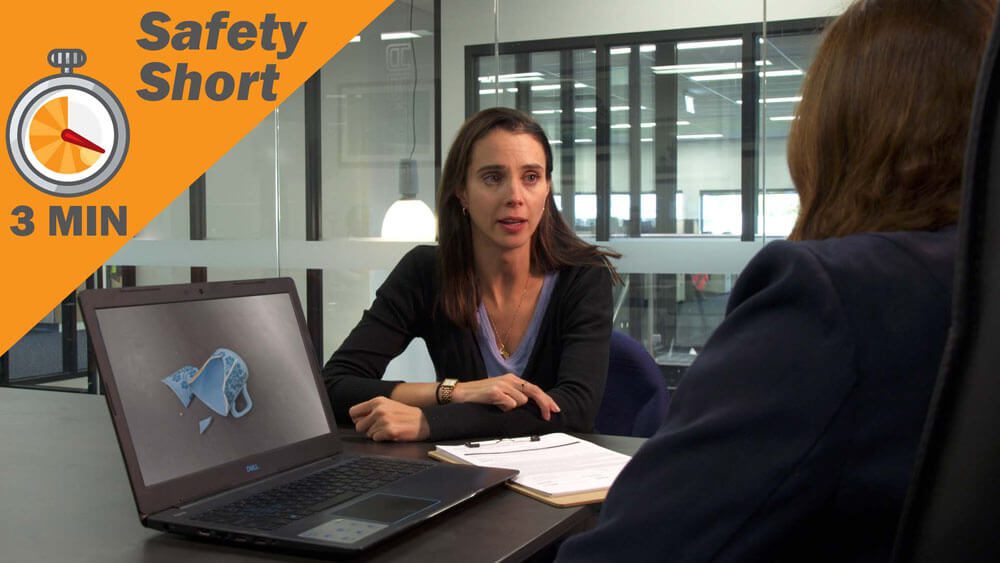
Violence and Aggression - Prevention
Every workplace is different, and it’s important to assess worksites as a means of identifying methods for reducing the likelihood of violent incidents occurring. This safety short outlines some of the prevention measures that can be taken to avoid violence and aggression.

Violence and Aggression - What is
Workplace violence and aggression can be defined as any act in which a person is abused, threatened, intimidated or assaulted during the course of their employment. This safety short covers some examples of violence and aggression that someone could potentially encounter as a result of their work.
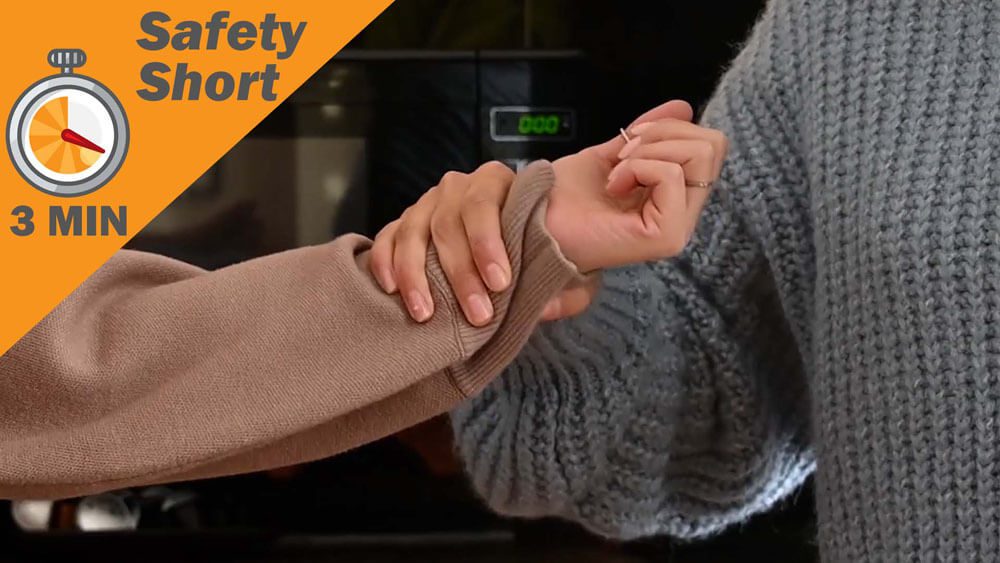
What is correct Lifting and Carrying Technique?
Accidents and injuries resulting from incorrect manual handling techniques comprise the largest group of occupational hazards that result in lost time. This safety short gives you a quick overview of correct lifting and carrying technique.

Where Asbestos can be found
Asbestos was once a widely used material, unfortunately what all forms of asbestos have in common is, they contain thin fibres which pose a threat to humans. This safety short gives you a guide to identifying areas and items that may contain asbestos.

Work-related Stress - Definition
Work-related stress is not always the easiest of workplace hazards to identify. This safety short explains how you can define what Work-related stress is.
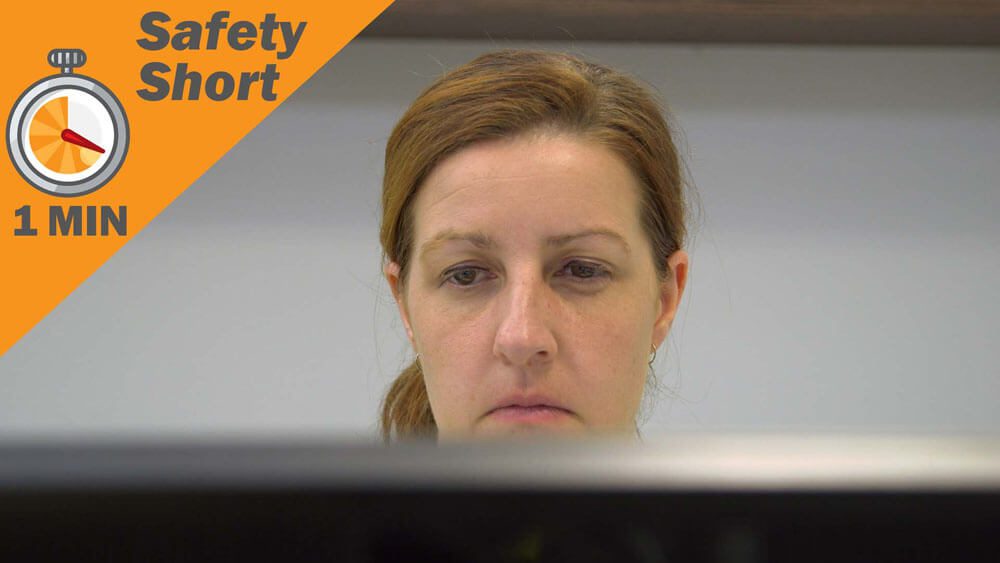
Work-related Stress - Prevention
Being aware of the potential risks, and moving pro-actively to prevent stress taking hold, will help minimize the chances of stress-related illness. This safety short outlines some of the prevention measures that can be taken to reduce work-related stress.
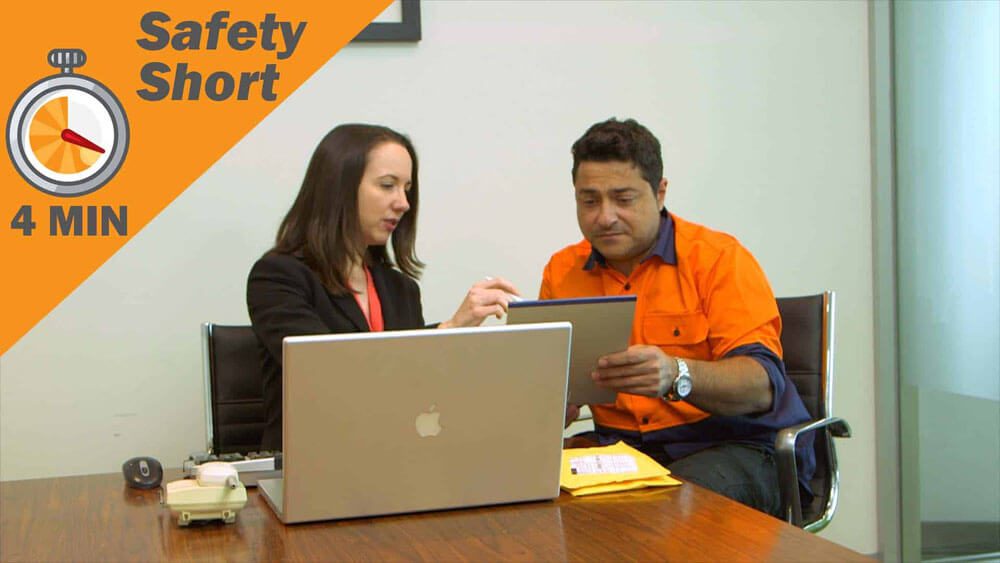
Workstation Setup Basics
Ergonomics is just one element that needs to be addressed in Workstation setup. This safety short outlines the important factors to consider when setting up a Workstation.

Electrical Power Tools - Safety Fundamentals
The only way to get the best out of your power tools is to make sure you know how to use them effectively and safely. This safety short gives you some safety essentials that should be considered when operating a power tool.
Subscribe Today
Train your entire organization for only $95/month or $795/year
with unlimited access to over 300 safety videos, expertly crafted by us!





